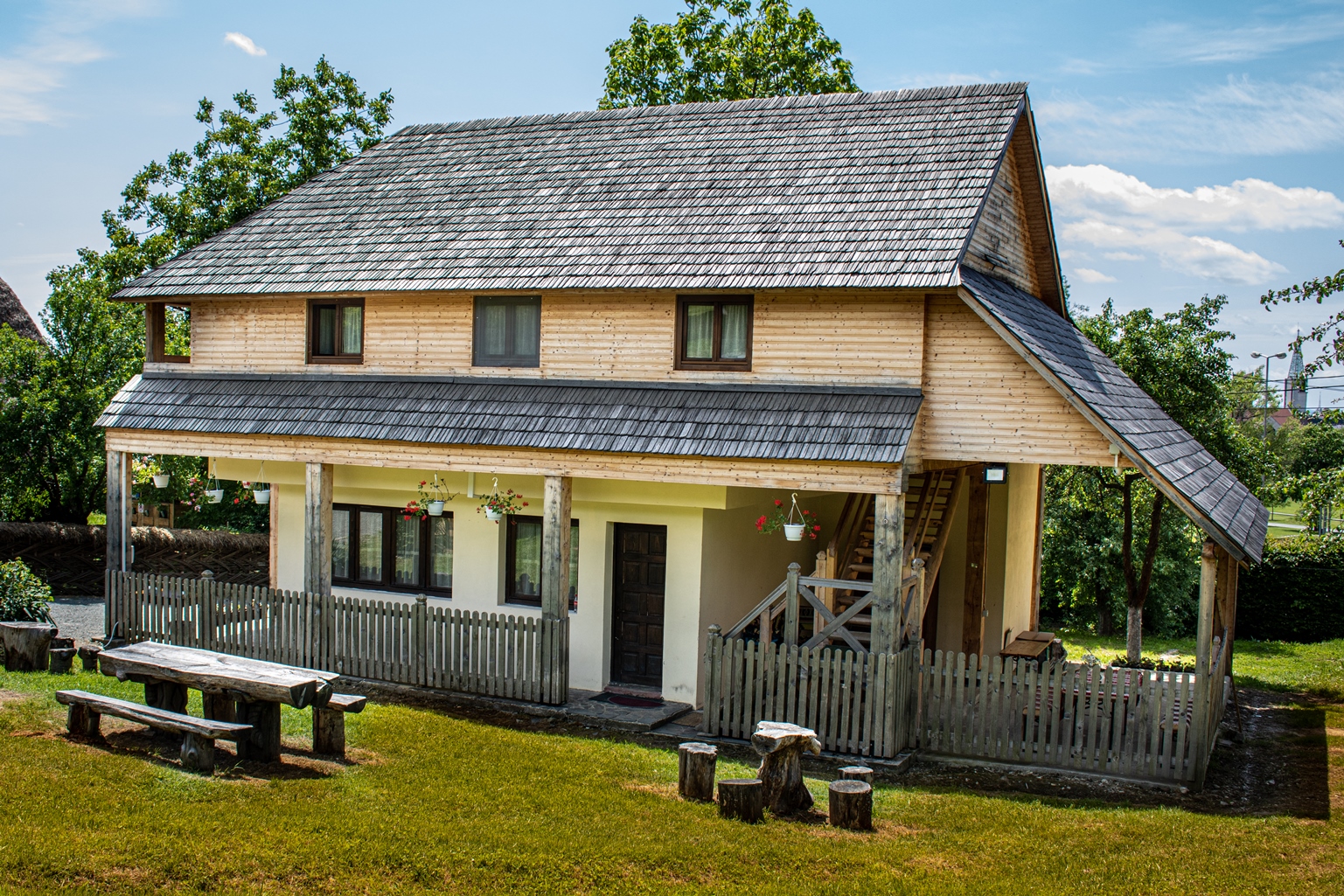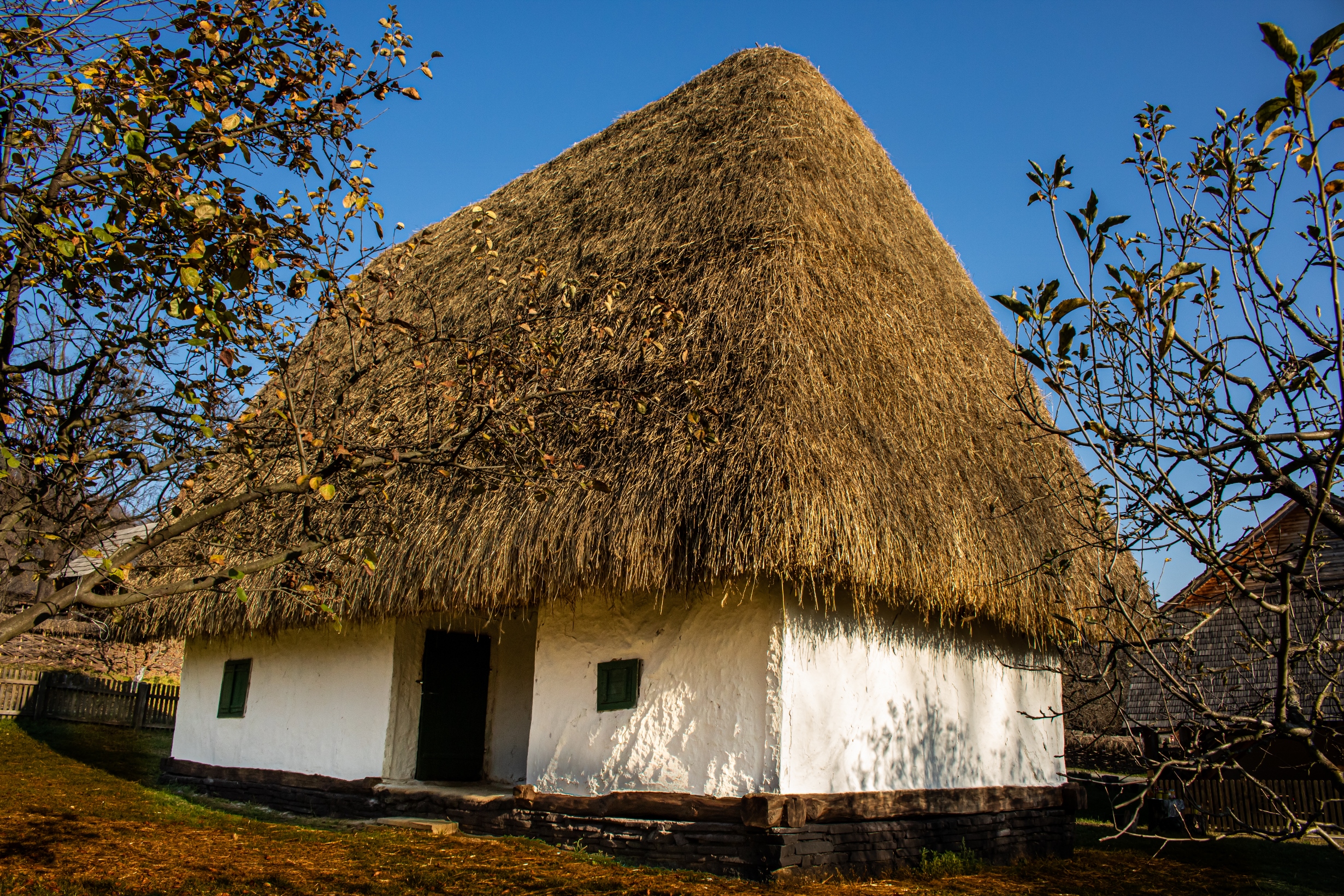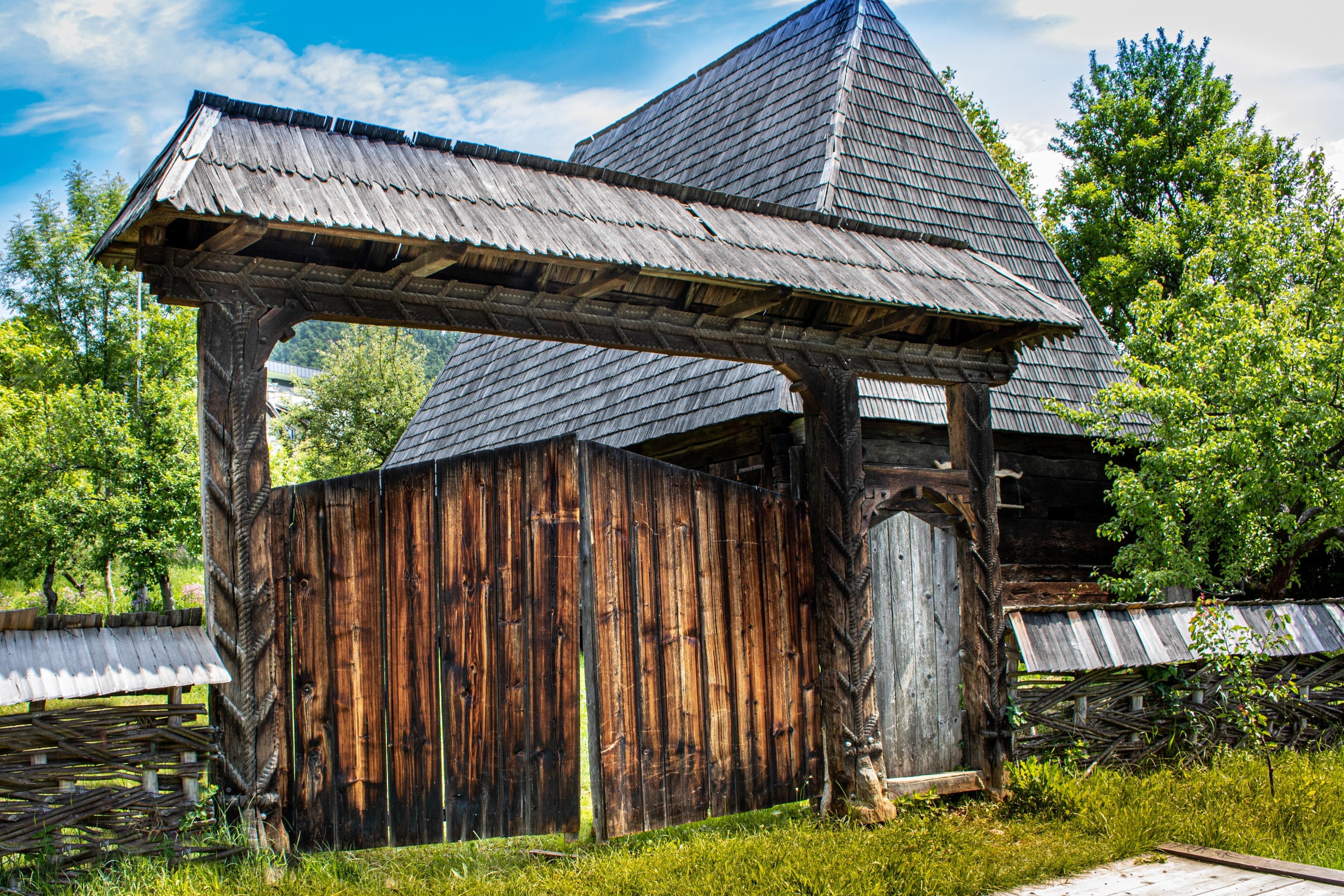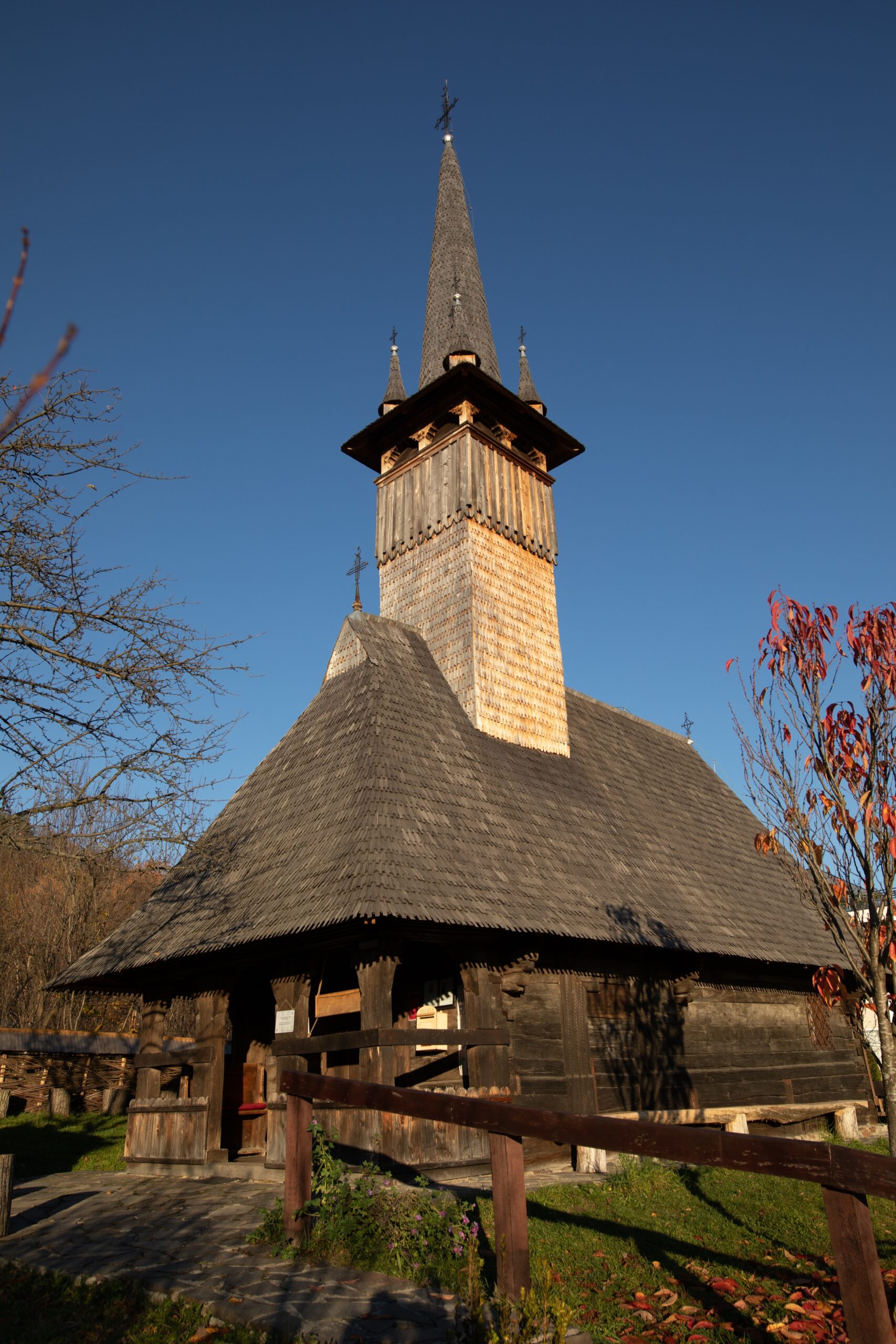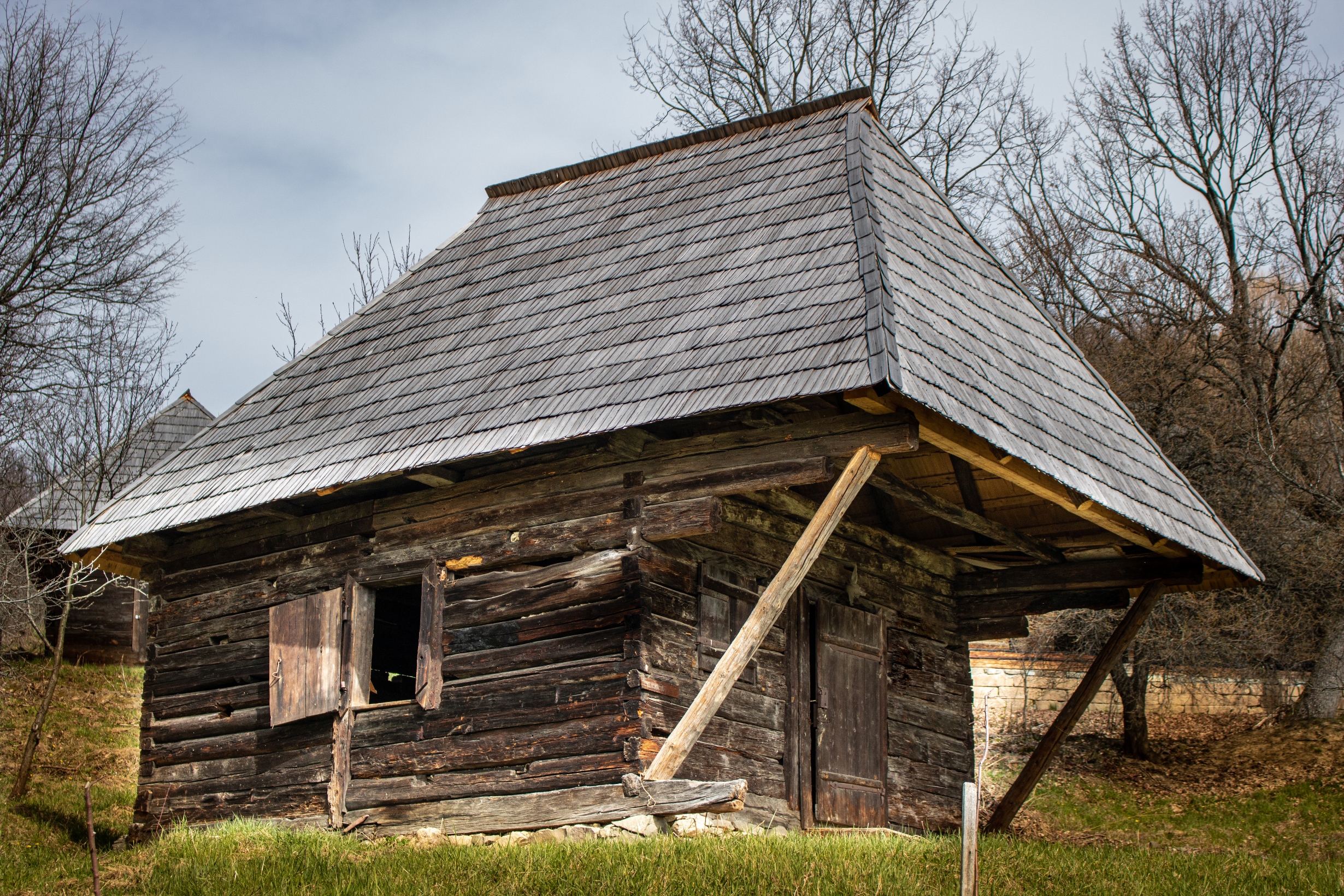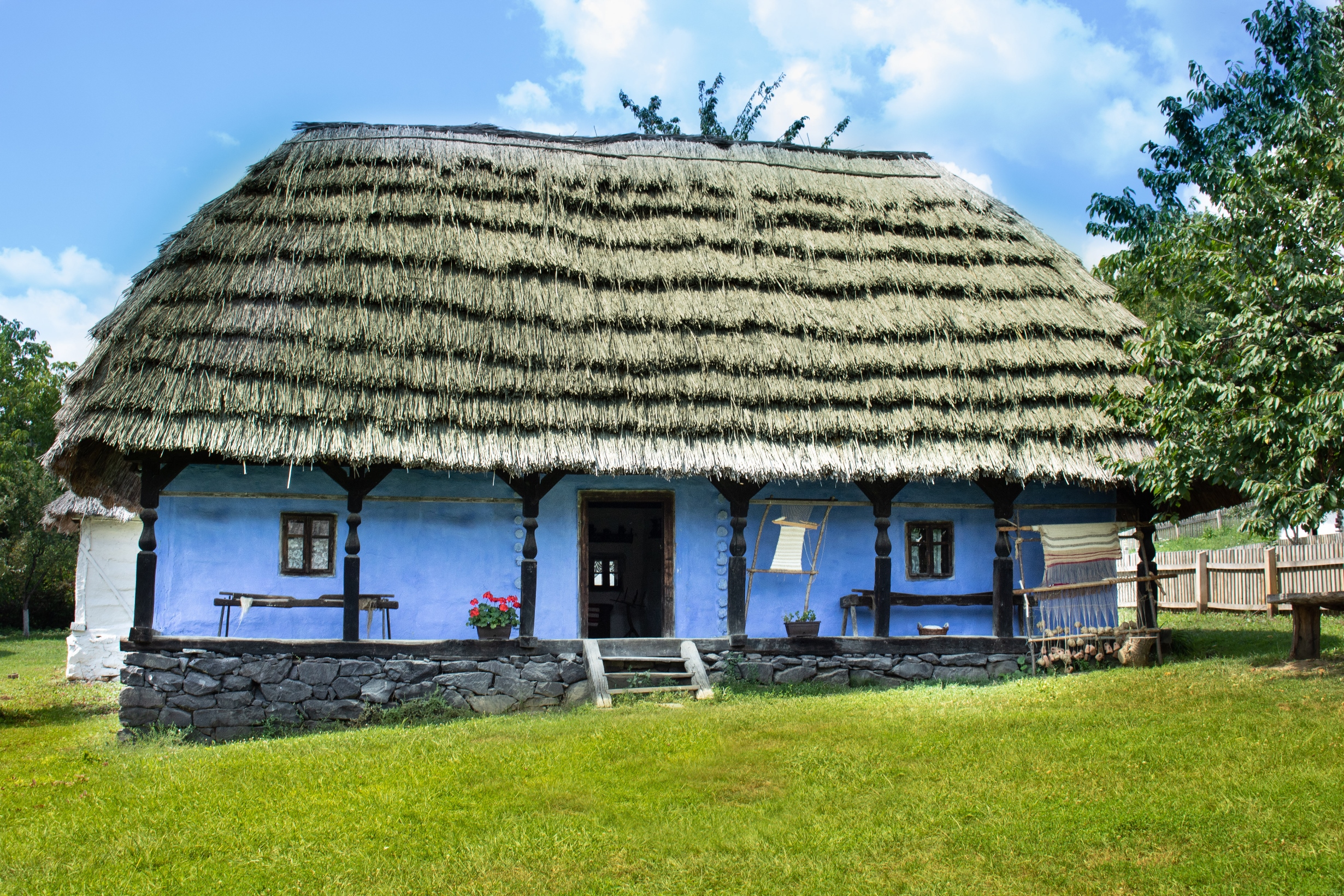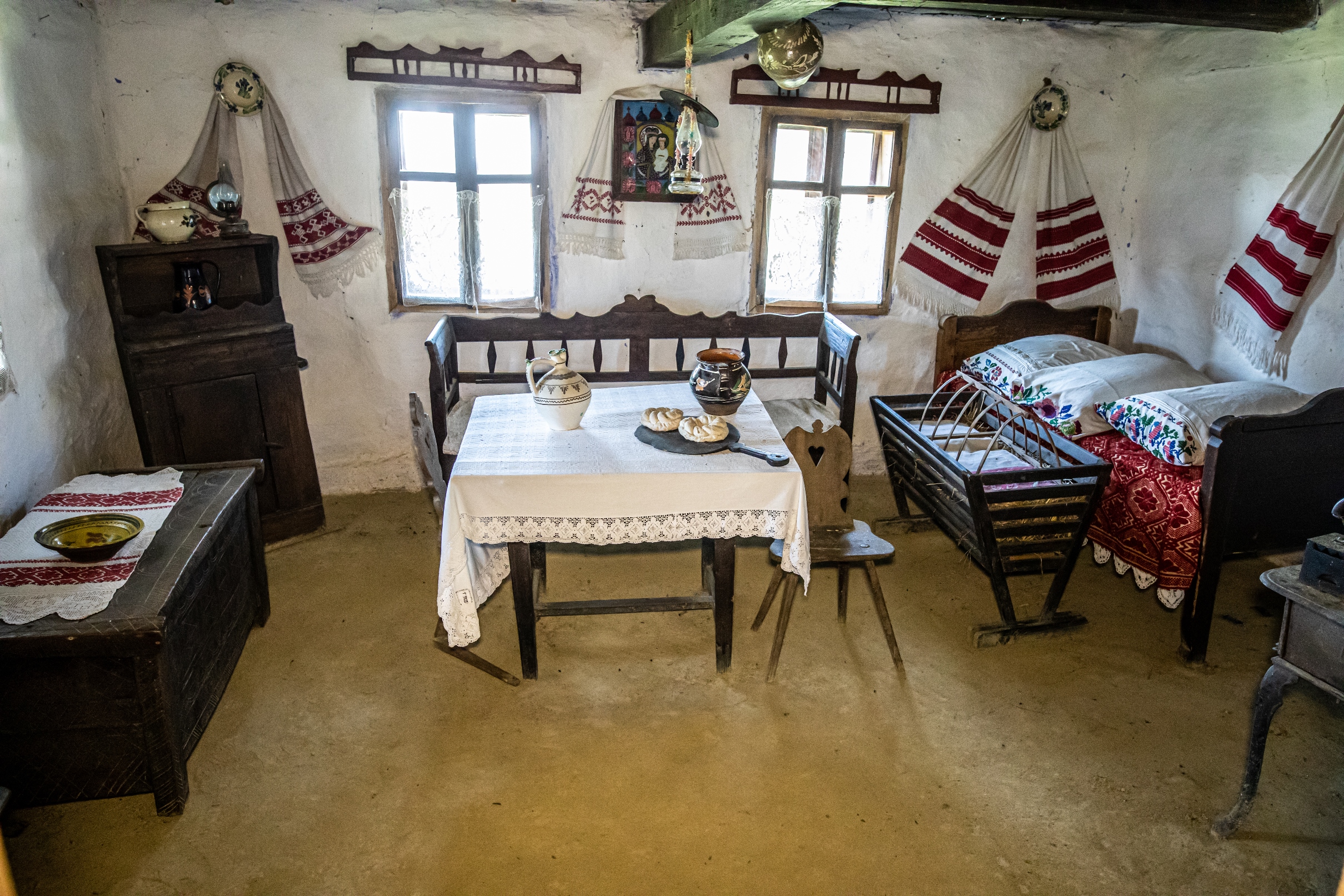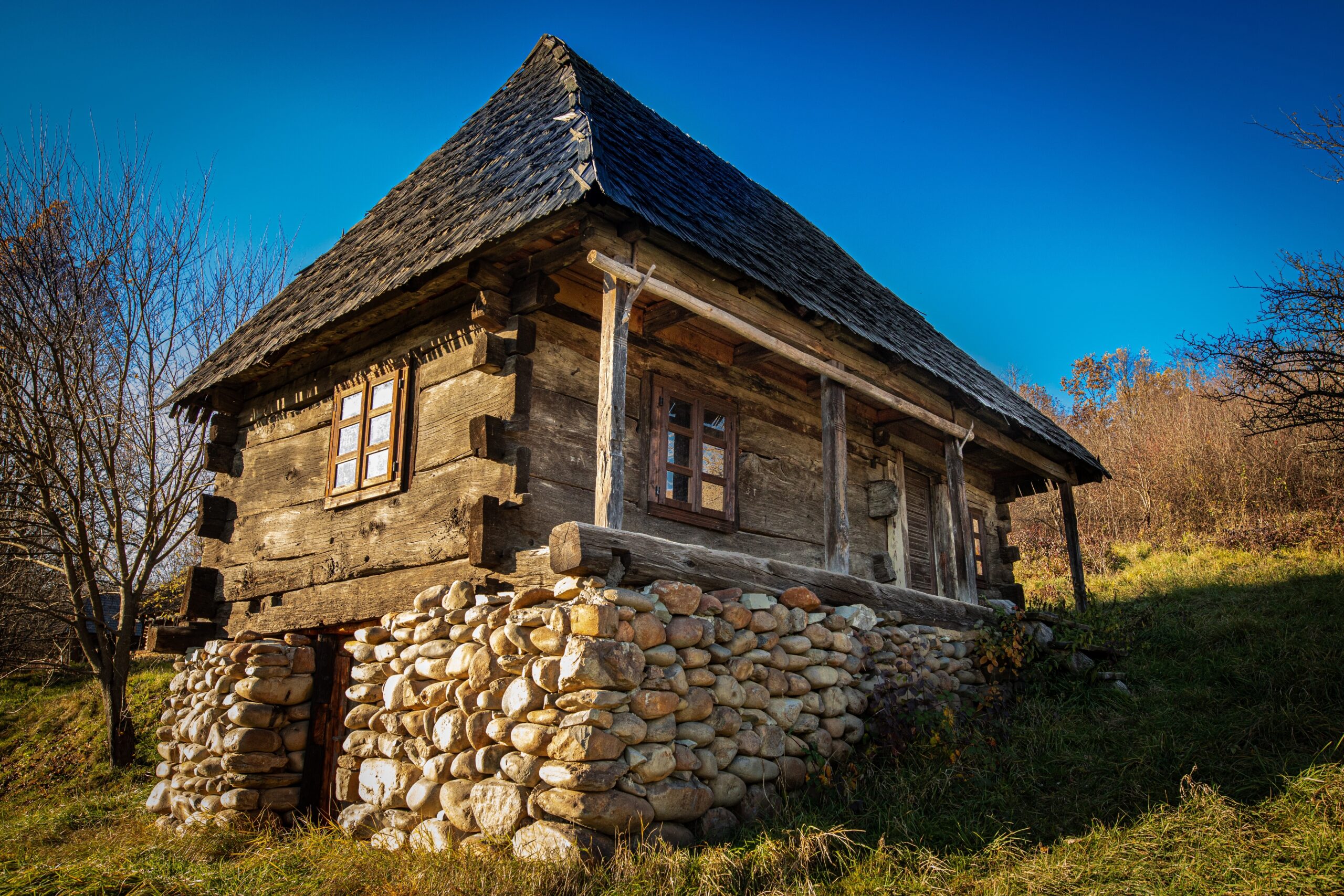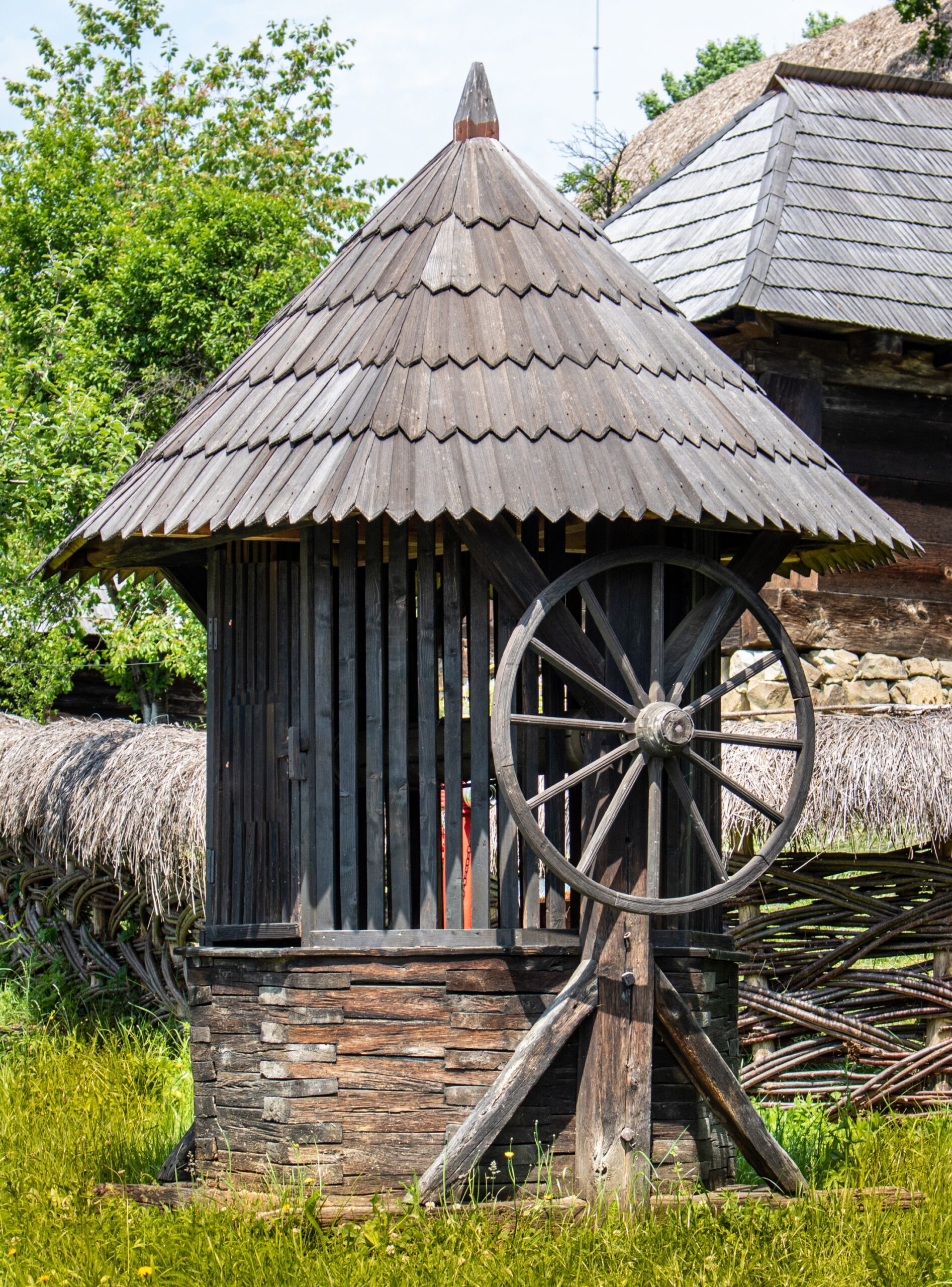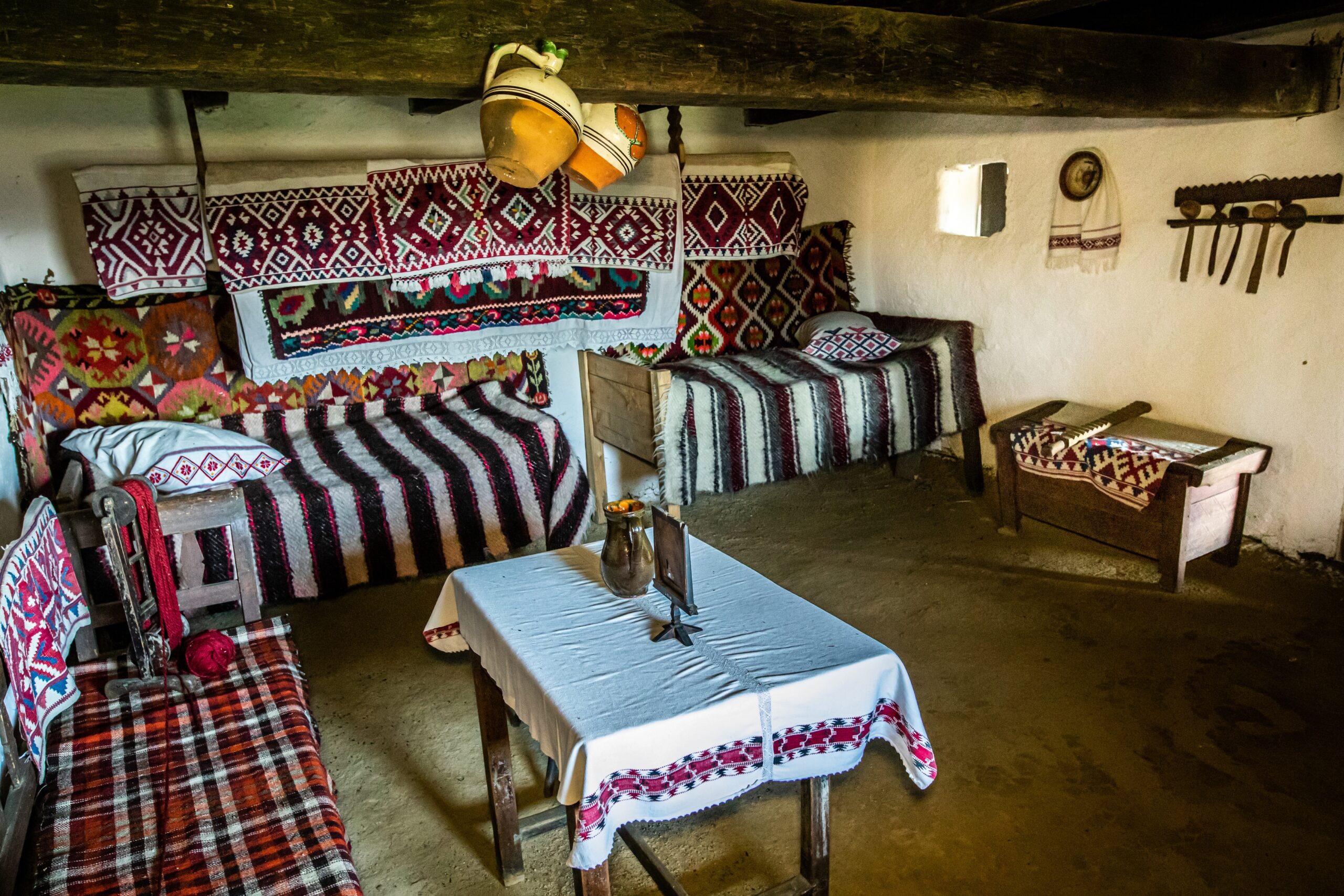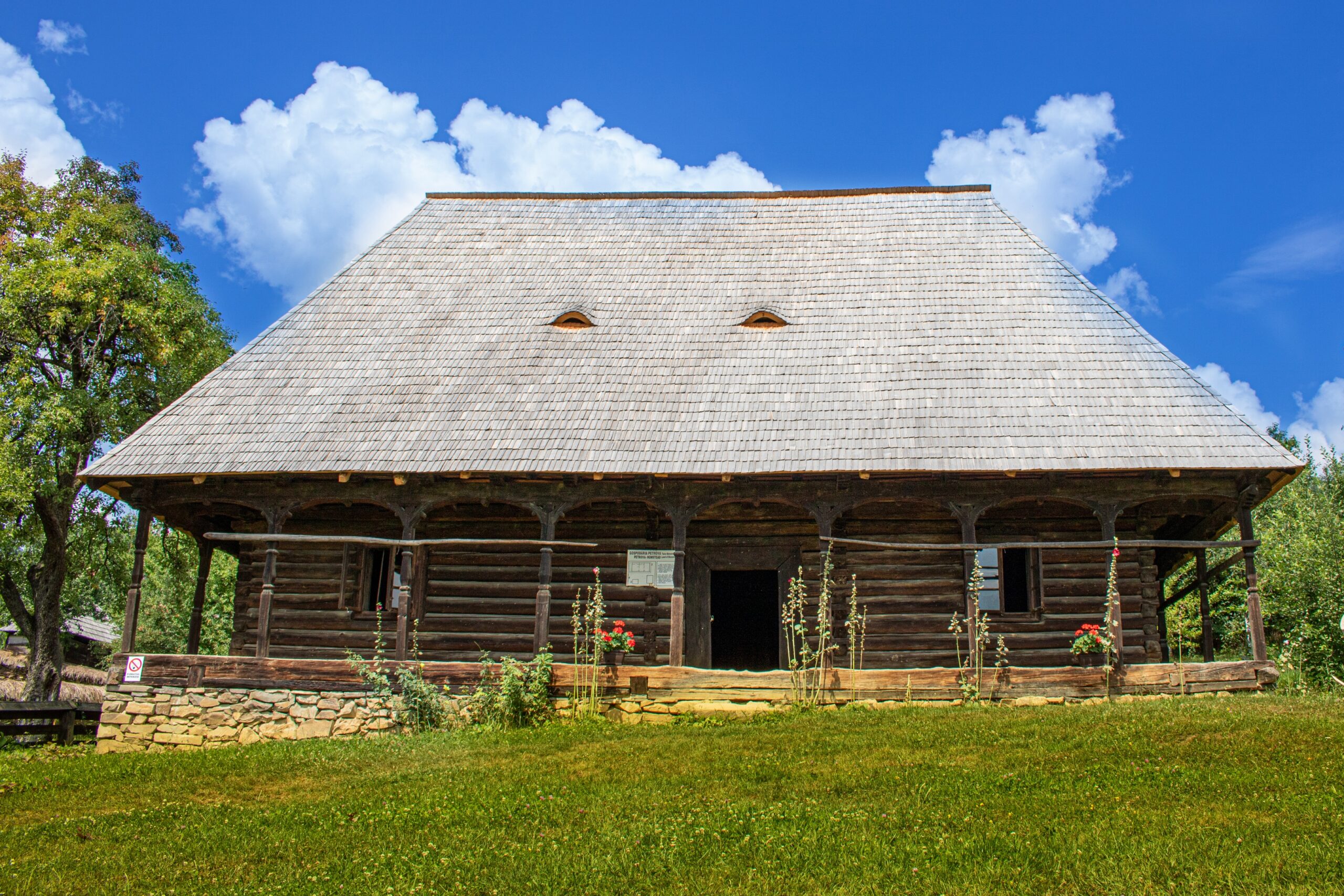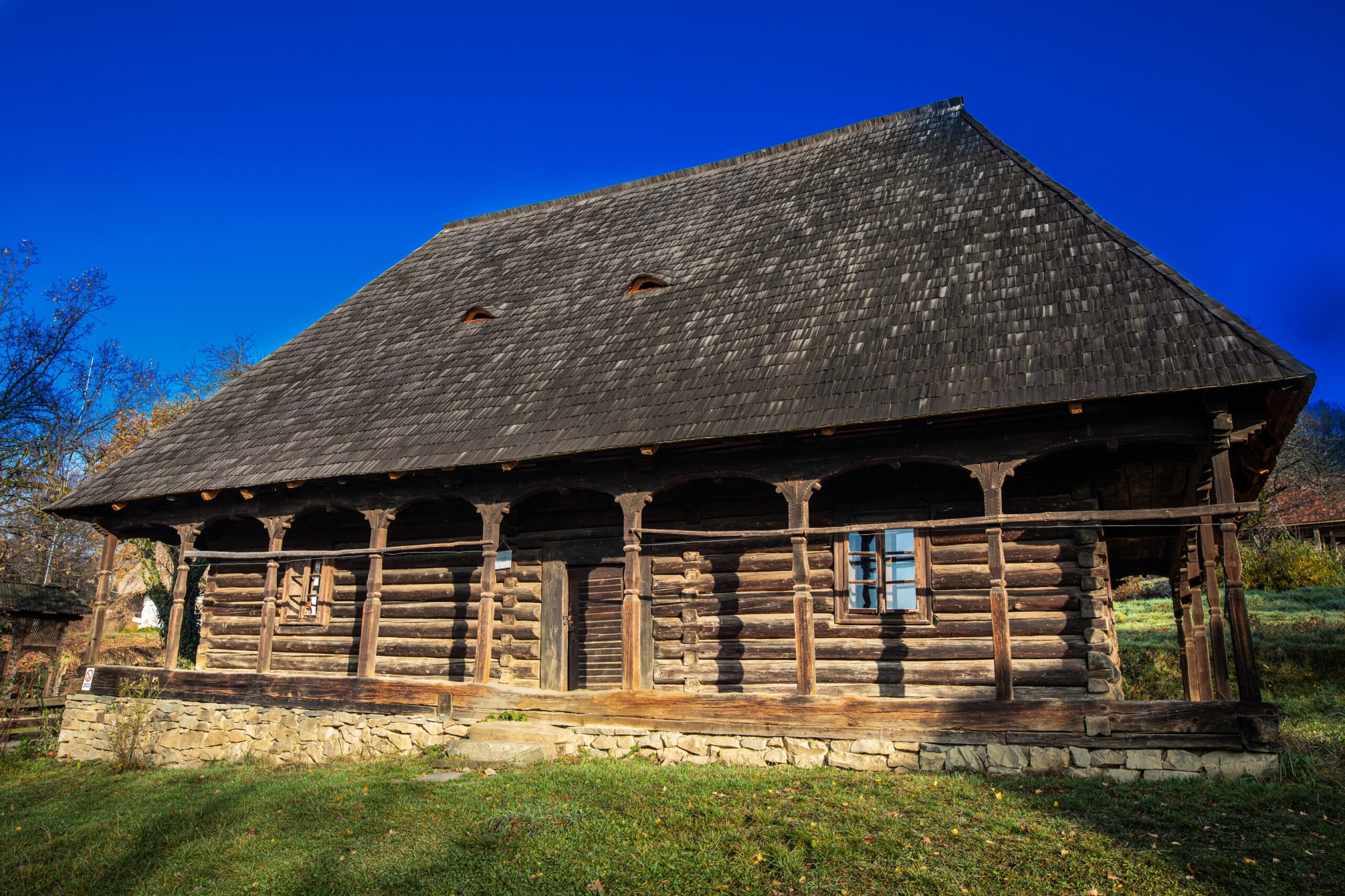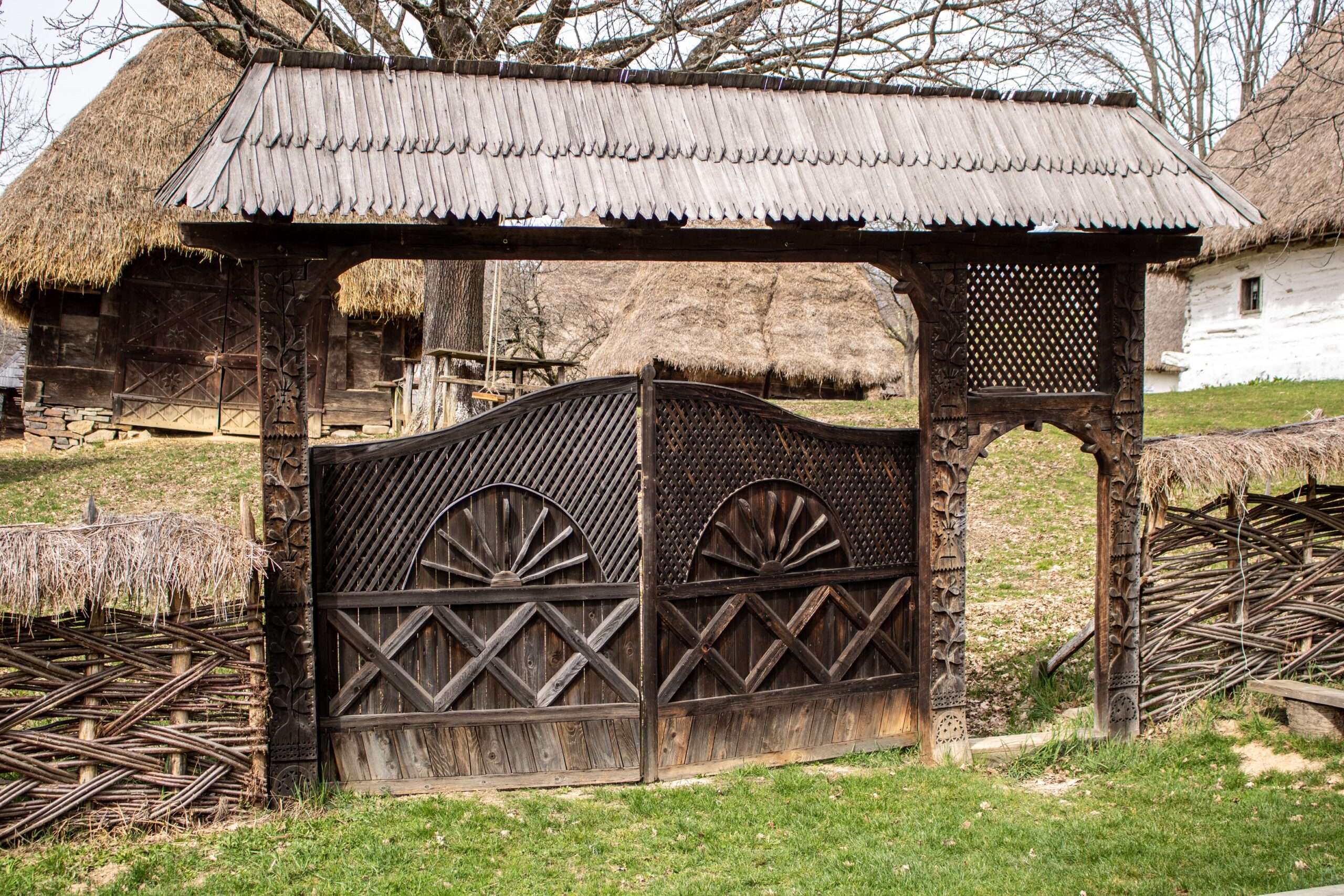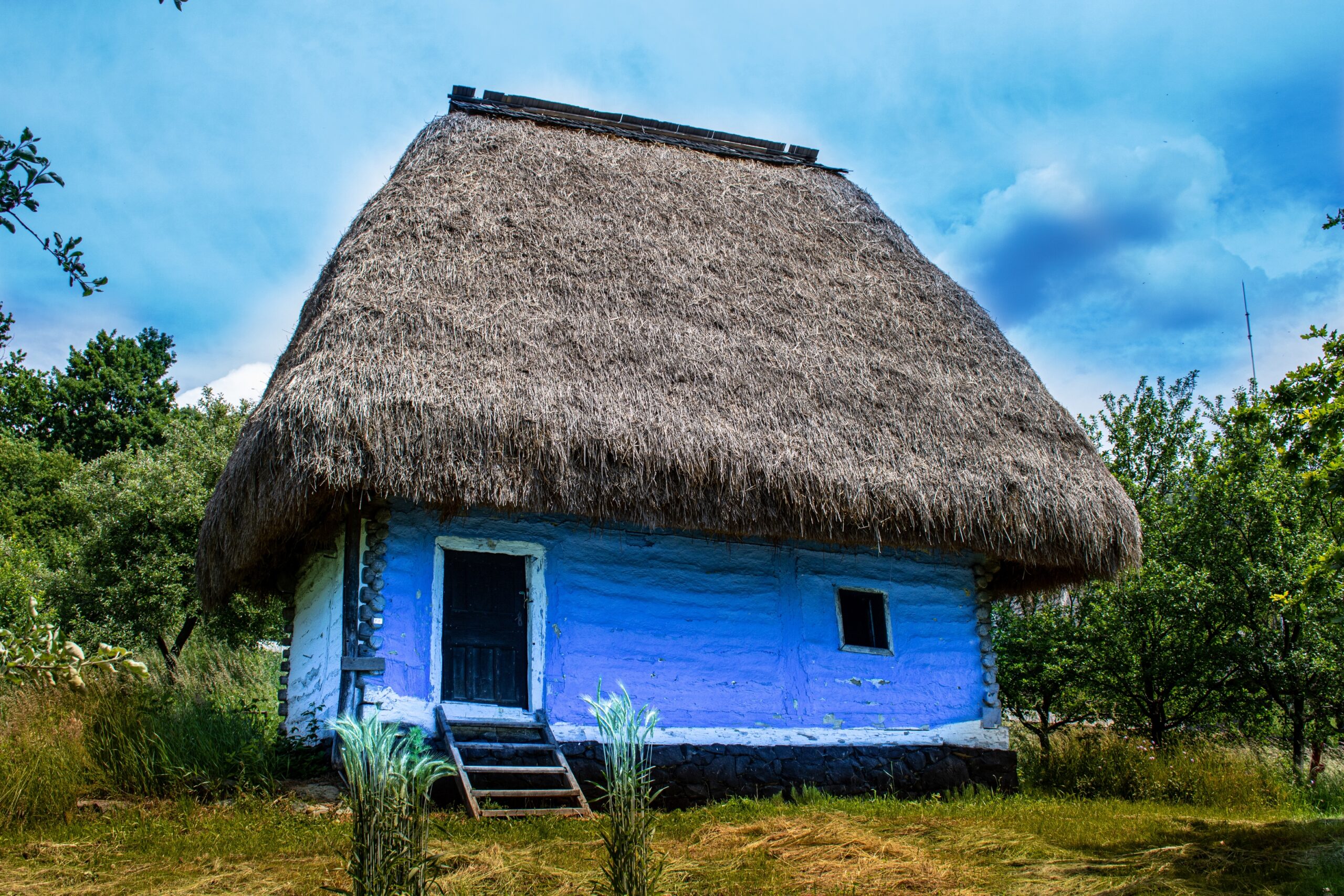Maramureș County Museum of Ethnography and Folk Art and the Village Museum, Baia Mare.
Address: 1 Dealul Florilor Street, Baia Mare 430165, Maramureş county, Romania
Phone: +40262 276 895
Email: muzeul_etnografie@yahoo.com
Website: www.etnografie-maramures.ro
The Museum of Ethnography and Folk Art of Baia Mare County is a public cultural institution subordinated to the Maramures County Council. The museum is located on the Hill of Flowers, in a picturesque area of the city, near the historic centre. The institution consists of two locations: The Rural Museum and the Pavilion Section, located in the former Summer Theatre of the city.
In front of the Pavilion Section is a sculptural ensemble by the famous sculptor Vida Geza, consisting of 12 columns depicting figures from Maramures and masks from local mythology, reminiscent of the massacre committed on 14 October 1944 by the retreating Horthyst troops.
The Youth Field offers a wide green area located in the immediate vicinity of the Queen Mary Municipal Park, a recreational destination for those who enjoy long and relaxing walks.
Brief history. In 1899, the Baia Mare Museum Association was founded in Baia Mare, formed by the city’s intelligentsia, whose members donated the objects that made up the first collections of the Baia Mare Museum. The Second World War interrupted the work of the museum, which was resumed in 1950, but then a special emphasis was placed on the history department. It was only in 1964 that the section of ethnography and folk art was approved.
The significant increase in the collections of the Ethnography Department, as well as the special value of the works recognised by major experts in this field: Tancred Benecianu, Boris Zderciuc, Silvia Zderciuc, Nicolae Ungureanu, Cornel Irimiei, and Giorgeta Stoica, led to the organisation of an ethnographic museum with an ex-pavilion. For this purpose, the building of the Summer Theatre, which was then in deep degradation, was obtained, and later underwent major repairs and refurbishment to accommodate both the exposition and the department’s warehouses. The idea of preserving the space for performances was not abandoned: a stage and an amphitheatre with a capacity of about 800 seats.
On 1 July 1978, the first exhibition of the main pavilion of the Department of Ethnography and Folk Art opened. This exhibition was kept until 2007, when a new main exhibition was opened: Wood in Traditional Communities from Cradle to Grave.
On 15 August 1985, after long efforts by industry experts and local authorities, an open-air section, the Village Museum, was inaugurated. The monuments of folk architecture represent four ethnographic regions of the county: Historic Maramures, Chioar, Lăpuș and Codru.
The museum also tried to present the types of farms according to the main occupation of the inhabitants of the area of origin. Thus, we have farms from the Lapusului region, vineyards from the Baia Mare sub-zone, fruit growers from the Maramuresului region, etc. Technical structures, such as water wheels, pipes, whirlpools and water mills, were not left out.
The museum was developed around a wooden church originating from the village of Chechiș (Dumbravita commune), an area that belonged to the domain of Baia Mare (cf. documentary evidence from 1566). The church has been on this site (Dealul Florilor – Baia Mare) since 1939 and dates back to 1630.

